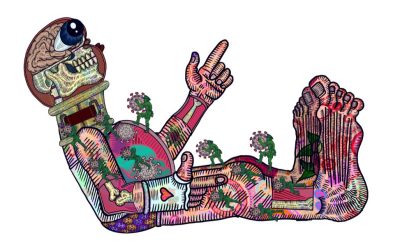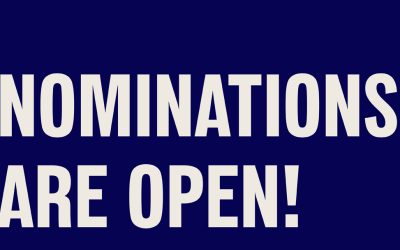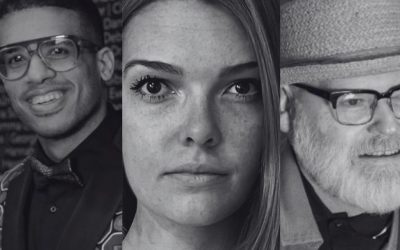
Congratulations on being included in the 2019 Power 100! What have you been up to since then? So since then I have been the face of a LinkedIn campaign which has been amazing. I was the recipient of the 2019 President’s Awards by the Asian Business Chamber of Commerce, and I’m working super hard to launch Diversability Card this year.
You’ve seen the Power 100 as an influencer, what do you think the importance of initiatives like this are? Good question, I think it actually creates a great platform to showcase the talented people that we have in the UK that have conditions and impairments, and the contribution that they are making towards challenging those stereotypes and perceptions and wanting to change society’s perception of disability. I think it’s a great go to place if you are looking for somebody whether to work with or get their thoughts on something, I think it encompasses every section of life.
It’s highly competitive so everyone that gets shortlisted and does end up on the Power 100, is such an achievement, I think it’s such a great initiative that Shaw Trust has created.
Lack of visibility means also lack of people to look up to – who would you say are some of your disabled icons/disabled people you admire? When the Shaw Trust Power 100 first started I was really excited about it but I actually looked through it and as a person of ethnic minority I didn’t really feel that there was a lot of representation of people from different backgrounds, I’m really glad to see that it is much more diverse and I’m super excited that I’m part of that change.
Some of the fellow changemakers I think are doing some great work are Sophie Morgan and Adam Pearson. Sophie is fantastic campaigner through her involvement in so many different things, the issues she highlights especially on social media with the day to day things that affect all of us all.
I recently saw a clip of Adam Pearson on Celebrity Master Mind and I just loved how he talked about the reality of living with a condition or impairment.
What are some of the biggest changes in your industry now compared to when you first started your career? I think there is definitely more of a focus on inclusion, businesses want to be more inclusive but they struggle with where to start. I think businesses are starting to prioritise inclusion and are realising that they are missing out on talent, especially disabled talent. Inclusion is way more than just people with conditions and impairments and businesses are realising they are missing a trick and if they’re not up to date or their practises aren’t inclusive – they’re essentially losing money and productivity.
Having the platform that I do as a business and culture change agent; I’ve had people contact me asking different questions and asking for advice and it’s always on “how do we attract disabled talent” and questions around recruitment. So I would say that’s one of the biggest changes I’ve noticed.
Can you tell us what led you to start the Asian Disability Network? I’m 32 years old now and growing up I never really felt represented in society, in my own community or in any press, media, books and films etc. When I say I never really felt represented I mean as an woman who has a condition or impairment but also as someone who belongs to the Asian community who lives with a condition or impairment and I was just really fed up, I thought that there has got to be other people in a similar position to me but I wasn’t able to talk to anybody, I didn’t have a relatable role model to look up and think wow they’ve done this, I can totally do it too. In Asian communities disability faces a further sense of stigma than it already does in mainstream society and I decided that I have to change this.
The real thing that triggered it for me was when I was talking to somebody who was about 10 years younger than me who was from the Asian community and had the same experience that I had had, which meant that in nearly a generation nothing had really changed, that made me feel really sad and that I had to do something, I had to be vocal about my experiences because I didn’t want the same to keep repeating. So that’s when I thought about what I really wanted growing up, which was a community of people to go and talk to or meet likeminded people in a similar situation. With the power of social media, that’s how it came about and is a platform to dismantle the stereotypes and perceptions within the Asian community but to also educate people and use it as a platform to explore how disability is perceived from a cultural and ethnic perception which I don’t feel like there is anything really like this for the Asian community.
It’s been really well received, I’ve had a lot of exposure with the BBC for it, and they’ve been really supportive. We’re also doing our first campaign in the next few months which is going to be a photography campaign. It’s just there to highlight everyday people going about their everyday lives, yes they may happen to have a condition or impairment and yes they may happen to be of Asian ethnicity but you know, it’s just another characteristic and people need to understand that and embrace it instead of treating it like a taboo.
You recently featured in one of LinkedIn’s campaigns, what was that like? It was amazing, they approached me to be a part of a campaign which was about people sharing their stories on how they found their job through LinkedIn.
When I was speaking to them I explained the difficulty in being a disabled job seeker and the challenges and stigma that you face, I think they were really moved by that as I guess they might not have thought about that and how LinkedIn is a really powerful tool because it allows you to put you as yourself, your skills and your qualities forward but without being judged on your appearance.
My story was shared so authentically throughout the campaign, they didn’t sensationalise my story which a lot of press outlets unfortunately like to do to disabled people to make the story more saucy or attractive in the title. Everything I say in the campaign are my own words and to get such a powerful message across in a 30 second video is amazing; the campaign has been an honour to be a part of and the coverage has been incredible.
There are changes happening with normalising disability in the media, obviously there is still a way to go before representation is where it should be. What do you think are the biggest changes/challenges that need to happen? Disability is definitely having a moment and that’s been happening for quite a while now, it’s so exciting to be part of that movement, I can absolutely feel that change is happening, slowly but surely. 10 years ago I would never have seen so many disabled people in soaps, or talk shows or films that we do now and for that has been an incredible shift.
I absolutely believe that we still have a long way to go but I really love how between the whole community of advocates, campaigners, passionate people and alias are really creating one strong voice and I feel like that hasn’t really been had before. Social media has been key in that change because we can create our own noise, we can share our own realities of what it’s like to live with an impairment or condition and that then naturally filters through. Like LinkedIn contacting me for example, maybe that wouldn’t have happened if I didn’t have a profile or wasn’t doing the work that I’m doing, so I think it has been great to see what’s happened so far but there is still such a long way to go. I think that the changes that need to happen are for businesses to be brave and bold and just need to start somewhere with wanting to be inclusive. Yes it’s scary, yes people are going to make mistakes but we are all human at the end of the day, but if you have the right people around the table and the right inclusion intent I think that’s a great place to start.
In terms of media representation, we need to be representing so many more types of different disabilities than being tokenistic and having just a wheelchair user for example. We know that there are 14 million disabled people and 1.2 million of those are wheelchair users, there are many hidden disabilities and multiple types of stigma. I experience stigma as a disabled person but also as a person of ethnic minority, I want to see those kind of stories being represented as well because until I created my own events I didn’t feel like I had a place to take my whole self to and talk about everything I experience, I had to talk about only one part of myself.
If you had one bit of advice for a young disabled person today, what would it be? Be brave and build the confidence to challenge something if it doesn’t feel right, whether that be in a family setting or a work setting or just going about your everyday life. We’re going to be met with certain stigmas and barriers but if you are vocal about it and stand up for yourself, we can stand up as a whole community.
Don’t take no for an answer, don’t take being treated in a certain way as the final option, you have the power to create the change that you want, especially more so in 2020 and beyond.
Will you be nominating anyone for next year’s Power 100? If so who and why? I want to nominate everybody working toward disability inclusion, it’s really hard to choose just one person!
Is there anything you are planning to campaign on now or in the future? I founded the Diversability Card which is all about challenging the extra costs disabled people face and providing discounts to disabled people.



